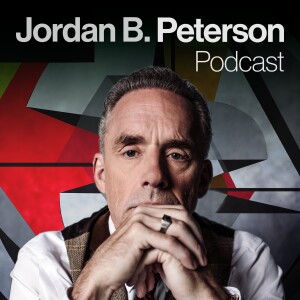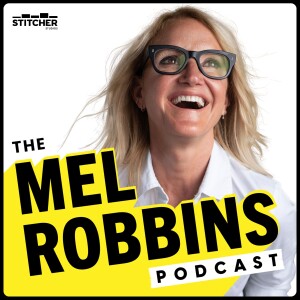
The Nonlinear Library: EA Forum
Education
Welcome to The Nonlinear Library, where we use Text-to-Speech software to convert the best writing from the Rationalist and EA communities into audio. This is: Pre-slaughter mortality of farmed shrimp, published by Hannah McKay on March 12, 2024 on The Effective Altruism Forum.Citation: McKay, H. and McAuliffe, W. (2024). Pre-slaughter mortality of farmed shrimp. Rethink Priorities.https://doi.org/10.17605/OSF.IO/W7MUZThe report is also available as apdf here.Executive summaryMortality rates are high in shrimp aquaculture, implying welfare threats are common.It is typical for ~50% of shrimp to die before reaching slaughter age.This equates to around 1.2 billion premature deaths a day on average.Mortality varies among species; prioritizing interventions should take this into account.Because of high pre-slaughter mortality (~81%), Macrobrachium shrimp represent a larger share of farmed shrimp than slaughtered shrimp.Most individual deaths are P. vannamei, despite having the lowest mortality rate.More larvae die than any other life stage, but this does not necessarily mean efforts should focus on them.Uncertainty remains about whether larval shrimp are sentient - they are planktonic, so do not make autonomous decisions.Minimizing larval deaths could cause compensatory deaths in later life stages (e.g., ensuring weaker larvae survive, who then die from later harsh conditions).Interventions should likely concentrate on the ongrowing stage (postlarval and juvenile-subadult shrimp), where there are still tens of billions of deaths.There are several causes of mortality and differences between farm types.Most causes are likely a combination of intrinsic shrimp traits (e.g., young shrimp are sensitive to environmental fluctuations), farming practices, and diseases.Disease is a main cause throughout life, but it is often a downstream effect of issues that farmers have some control over (e.g., poor water quality).Variation among reported figures, especially that more intensive farms have fewer deaths, suggests many factors are at play and that some are controllable.The effects of reducing early mortality on industry trajectory are uncertain.The number of shrimp born may decrease if farmers must produce fixed output. But shrimp would live longer, increasing the chances for negative experiences.However, consumer demand has historically outstripped supply, so the industry may grow if it had better control of conditions causing mortality.If reduced deaths come from intensification of practices, more shrimp may be reared in conditions that can harm welfare (e.g., high stocking densities).Pre-slaughter mortality cannot depict total welfare because it misses nonfatal effects.Mortality is only a lower-bound proxy of how many shrimp suffer negative welfare.Premature mortality is more appropriate as one indicator among many that a welfare reform was successful, rather than an end in itself.Pre-slaughter mortality data is limited and non-uniform.Reports should clarify whether mass die-off events were excluded from mortality estimates and if rates are based on intuition from experience or empirical studies.Box 1: Shrimp aquaculture terminologyThe terms 'shrimp' and 'prawn' are often used interchangeably. The two terms do not reliably track any phylogenetic differences between species. Here, we use only the term "shrimp", covering both shrimp and prawns. Note that members of the family Artemiidae are commonly referred to as "brine shrimp" but are not decapods and so are beyond the present scope.We opt for the use of Penaues vannamei over Litopenaeus vannamei (to which this species is often referred), due to recognition of the former but not the latter nomenclature by ITIS, WorMS, and the Food and Agriculture Organization of the United Nations (FAO) ASFIS List of Species for Fishery Statistics Purposes.The shrimp farming industry uses many terms usually associated with agriculture - for example, 'crops' for a group o...
More Episodes
EA - Taiwan's military complacency. by JKitson
 2023-12-05
2023-12-05
EA - An exhaustive list of cosmic threats by JordanStone
 2023-12-05
2023-12-05
EA - I donated $35 to offset my carbon footprint for this year by Luke Eure
 2023-12-05
2023-12-05
EA - Is the Animal & Vegan Advocacy (AVA) Summit an EA Event? by Julia Reinelt
 2023-12-04
2023-12-04
EA - Extending Existing Animal Protection Laws by Moritz Stumpe
 2023-12-04
2023-12-04
EA - GWWC London Group Co-leads: Reflections on our first event by Chris Rouse
 2023-12-03
2023-12-03
EA - What do we really know about growth in LMICs? (Part 1: sectoral transformation) by Karthik Tadepalli
 2023-12-03
2023-12-03
EA - Farewell messages from the EA Philippines Core Team by Elmerei Cuevas
 2023-12-03
2023-12-03
EA - Doing Good Effectively is Unusual by Richard Y Chappell
 2023-12-01
2023-12-01
EA - Effektiv Spenden's Impact Evaluation 2019-2023 (exec. summary) by Sebastian Schienle
 2023-12-01
2023-12-01
EA - My Personal Priorities, Charity, Judaism, and Effective Altruism by Davidmanheim
 2023-12-01
2023-12-01
EA - ALLFED's 2023 Highlights by Sonia Cassidy
 2023-12-01
2023-12-01
EA - Empirical data on how teenagers hear about EA by Jamie Harris
 2023-11-30
2023-11-30
EA - #173 - Digital minds, and how to avoid sleepwalking into a major moral catastrophe (Jeff Sebo on the 80,000 Hours Podcast) by 80000 Hours
 2023-11-29
2023-11-29
EA - 80,000 Hours is looking for a new CEO (or to fill a vacancy left by someone promoted to be CEO). Could that be you? by 80000 Hours
 2023-11-29
2023-11-29
EA - Elements of EA: your (EA) identity can be bespoke by Amber Dawn
 2023-11-29
2023-11-29
EA - Rethink Priorities: Seeking Expressions of Interest for Special Projects Next Year by kierangreig
 2023-11-29
2023-11-29
EA - Road safety: Landscape of the problem and routes to effective policy advocacy by Rethink Priorities
 2023-11-29
2023-11-29
EA - How I feel about my GWWC Pledge by Michael Townsend
 2023-11-29
2023-11-29
EA - Dialogue on Donation Splitting by JP Addison
 2023-11-29
2023-11-29
Create your
podcast in
minutes
- Full-featured podcast site
- Unlimited storage and bandwidth
- Comprehensive podcast stats
- Distribute to Apple Podcasts, Spotify, and more
- Make money with your podcast
It is Free
You may also like

Mayo Clinic Talks


The Saad Truth with Dr. Saad


Positive Thinking Mind


The Jordan B. Peterson Podcast


The Mel Robbins Podcast


- Privacy Policy
- Cookie Policy
- Terms of Use
- Consent Preferences
- Copyright © 2015-2024 Podbean.com


 iOS
iOS Android
Android